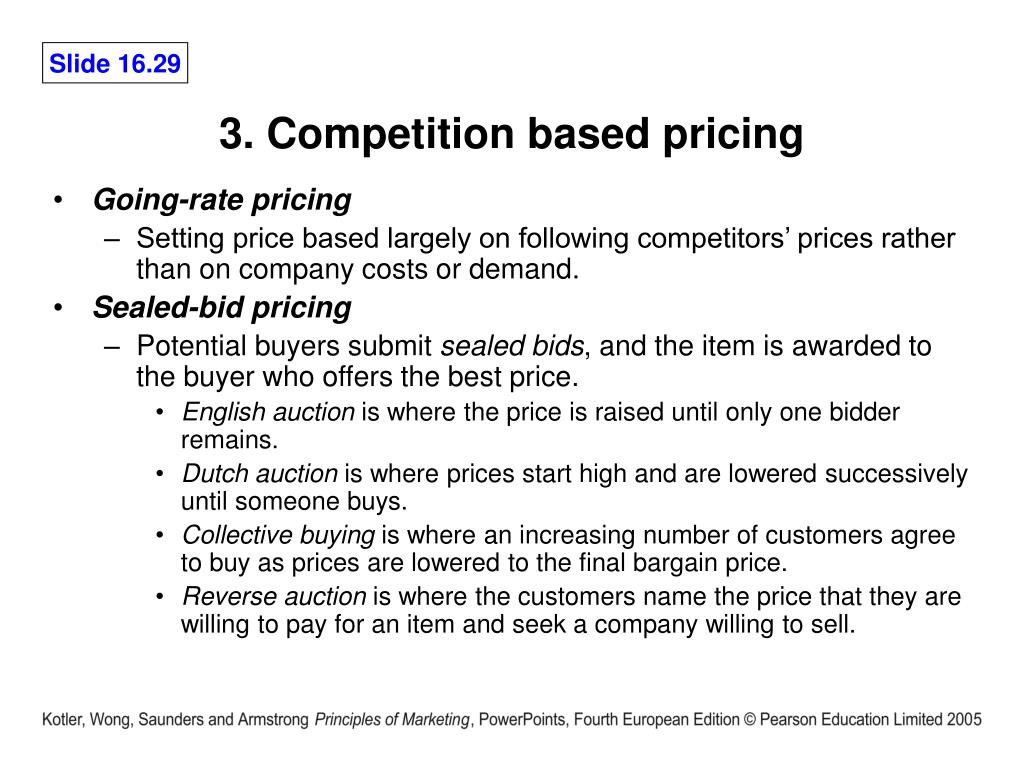

New brands without enough data negate the need for detailed research because they can capitalize on work done by existing competitors.Ī competitor-based pricing strategy, especially price matching or loss leader pricing, can help businesses claim market share from competitors. If they offer a ‘basic’ option accessible to more potential customers, they may opt for a loss leader pricing strategy.Ĭompetition-based pricing can be an excellent choice for brands that want to enter a market quickly and easily. If their product is of superior quality, they may set their price slightly higher than competitors and market these features heavily. Companies review pricing for similar products and services in the market and decide where they should sit relative to these. Unlike more complex pricing strategies, competitor-based pricing is relatively simple. Advantages of competitor-based pricingĬompetition-based pricing offers several advantages to businesses, including: Likewise, a competitive pricing strategy wouldn’t suit businesses with a very unique product or service that allows them to dictate the price. For example, a company that dominates a market with very little competition would be better off using other pricing strategies like value-based pricing. When shouldn’t you use a competitive pricing strategy?Ī competitor-based pricing strategy isn’t a viable choice for every type of business. This can be especially useful for startups entering a new market without historical pricing data and those that need a fast route to market. In environments with minimal product variation and many options available, brands may rely on a competitor-based pricing strategy to determine their optimal pricing positions. When should you use competitive pricing?Ĭompetitor-based pricing is often used in markets where numerous companies sell similar products or services, like retail and e-commerce. Marketing yourself as the lowest cost option is a genuine pricing strategy, but it can affect profitability and damage perceived value in the long term. Intentionally setting prices below competitor selling prices (also known as loss leader pricing) can effectively grow market share and revenue in the short term. Below the competition (loss leader pricing)


Branding and marketing also allow companies to remain competitive while differentiating themselves.ģ. With this competitor-based pricing strategy, companies promise to offer the same price as their competitors for identical products. Price-match promises are a common competition-based pricing strategy companies use to stop customers from switching to competitors for a better price. The same as the competition (price matching) This could mean a more significant investment in marketing to position the brand as ‘luxury’, added features, or favorable customer terms like extended warranties.Ģ. Setting a premium price above market value can be effective if the company demonstrates that the product or service is somehow superior to the competition. With competition-based pricing, companies make three types of pricing decisions - to set prices above, the same, or below their direct competitors.ġ. What are the types of competition-based pricing? Unlike cost-plus pricing, a competitive pricing model doesn’t look internally at production costs instead, it looks outward at competitor prices and consumer demand to determine the optimal final price. With competition-based pricing, companies conduct a competitive pricing analysis and decide whether to set their prices the same, above or below the competition. Let’s look at the definition of competition-based pricing, when to use it, and the advantages and disadvantages of this pricing model. A competitive pricing strategy allows companies to maintain an advantage by strategically setting prices above, below, or the same as their direct competitors.Ĭompetition-based pricing can be a highly effective strategy, but it’s not right for every business. An effective pricing strategy is vital for maintaining and growing profit margins and market share in today’s highly competitive markets.Ĭompetition-based pricing is a pricing model commonly used in several industries, including retail and e-commerce.


 0 kommentar(er)
0 kommentar(er)
